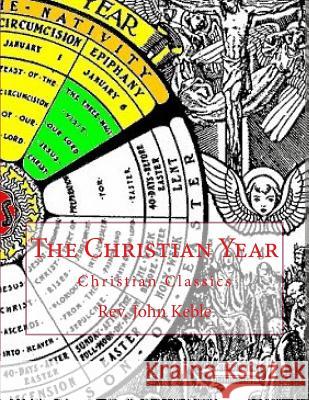The Christian Year: Christian Classics » książka
The Christian Year: Christian Classics
ISBN-13: 9781541278295 / Angielski / Miękka / 2016 / 160 str.
In 1827-when its author's age was thirty-five-"The Christian Year" was published. Like George Herbert, whose equal he was in piety though not in power, Keble was joined to the Church in fullest sympathy with all its ordinances, and desired to quicken worship by putting into each part of the ritual a life that might pass into and raise the life of man. The spirit of true religion, with a power beyond that of any earthly feuds and controversies, binds together those in whom it really lives. Setting aside all smaller questions of the relative value of different earthly means to the attainment of a life hidden with Christ in God, Christians of all forms who are one in spirit have found help from "John Keble's Christian Year," and think of its guileless author with kindly affection. Within five-and-twenty years of its publication, a hundred thousand copies had been sold. The book is still diffused so widely, in editions of all forms, that it may yet go on, until the circle of the years shall be no more, living and making live. Four years after "The Christian Year" appeared, Keble was appointed (in 1831) to the usual five years' tenure of the Poetry Professorship at Oxford. Two years after he had been appointed Poetry Professor, he preached the Assize Sermon, and took for his theme "National Apostasy." John Henry Newman, who had obtained his Fellowship at Oriel some years before the publication of "The Christian Year," and was twenty-six years old when it appeared, received from it a strong impulse towards the endeavour to revive the spirit of the Church by restoring life and soul to all her ordinances, and even to the minutest detail of her ritual. The deep respect felt for the author of "The Christian Year" gave power to the sermon of 1833 upon National Apostasy, and made it the starting-point of the Oxford movement known as Tractarian, from the issue of tracts through which its promoters sought to stir life in the clergy and the people; known also as Puseyite because it received help at the end of the year 1833 from Dr. Pusey, who was of like age with J. H. Newman, and then Regius Professor of Hebrew. There was a danger, which some then foresaw, in the nature of this endeavour to put life into the Church; but we all now recognise the purity of Christian zeal that prompted the attempt to make dead forms of ceremonial glow again with spiritual fire, and serve as aids to the recovery of light and warmth in our devotions. It was in 1833 that Keble, by one earnest sermon, with a pure life at the back of it, and this book that had prepared the way, gave the direct impulse to an Oxford movement for the reformation of the Church. The movement then began. But Keble went back to his curacy at Hursley. Two years afterwards the curate became vicar, and then Keble married. His after-life continued innocent and happy. He and his wife died within two months of each other, in the came year, 1866. He had taken part with his friends at Oxford by writing five of their Tracts, publishing a few sermons that laboured towards the same end, and editing a "Library of the Fathers." In 1847 he produced another volume of poems, "Lyra Innocentium," which associated doctrines of the Church with the lives of children, whom he loved, though his own marriage was childless. The power of Keble's verse lies in its truth. A faithful and pure nature, strong in home affections, full of love and reverence for all that is of heaven in our earthly lot, strives for the full consecration of man's life with love and faith. There is no rare gift of genius. Keble is not in subtlety of thought or of expression another George Herbert, or another Henry Vaughan. But his voice is not the less in unison with theirs, for every note is true, and wins us by its purity. His also are melodies of the everlasting chime.
Zawartość książki może nie spełniać oczekiwań – reklamacje nie obejmują treści, która mogła nie być redakcyjnie ani merytorycznie opracowana.











